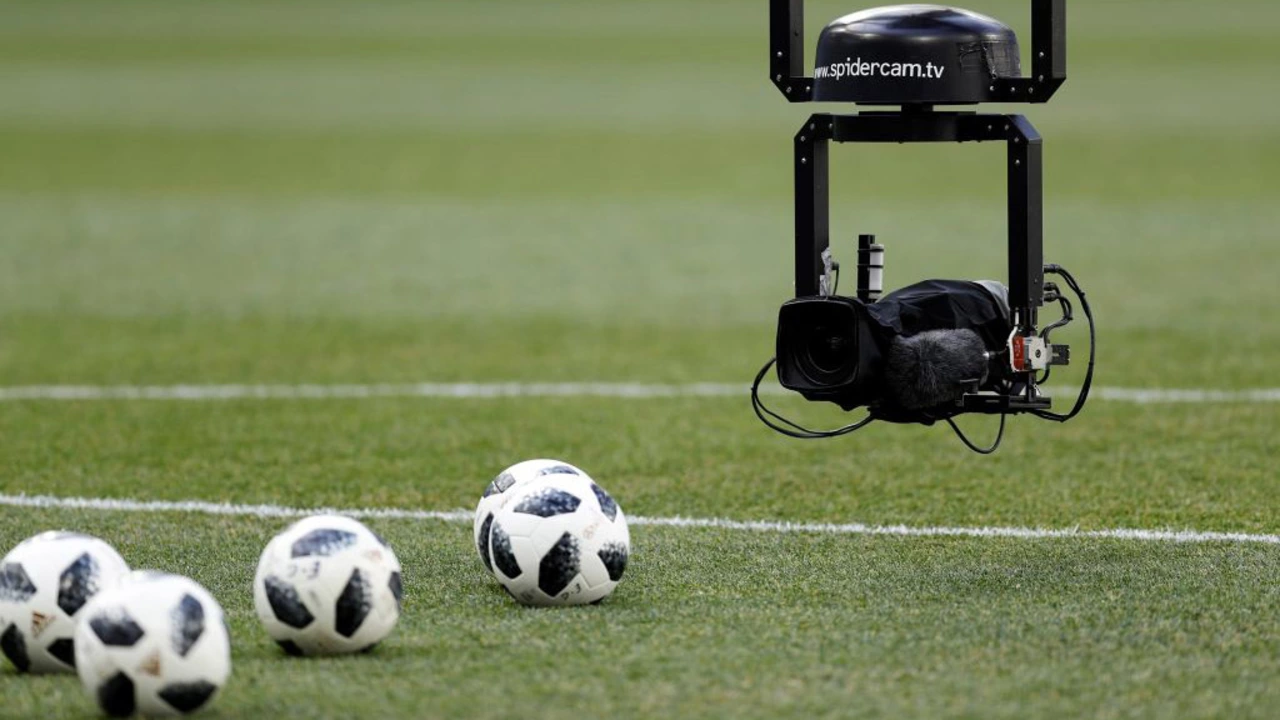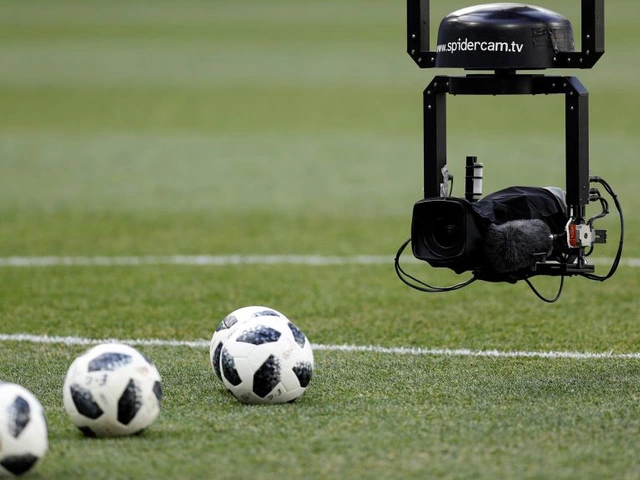What is the best way to record a soccer game?

Setting Up the Basin: Preparing Your Equipment for Filming
So, the rambunctious love for soccer has pulled you towards capturing its magic on your own camera. It’s a familiar tale. Here is how it starts: you find yourself on the sidelines of a soccer game. The players are darting across the field, the ball is zipping from one end to the other and there’s a wild energy in the air. And you think, “I’ve got to record this!”. But how exactly do you go about recording a soccer game? Grab a camcorder and start praying that you catch something interesting? Nope, there's an art to it. And it starts with the right equipment.
First up, you need a professional grade camera with a wide angle and, preferably, a zoom in feature. Wait, did I say 'camera'? I meant TWO cameras. Yes, to get the best out of a soccer game, you must have two cameras. One will be positioned on the center line to capture the wider happenings on the field while the other should be mobile and be used to zoom in and capture the intricate plays. As for the second camera, a good video camcorder or DSLR with a tripod for stability is a good option. Instructions, right? Letters in a recipe.
Additionally, headphones are a superb asset in the recording process. They allow you to be aware of the sound you're recording and rectify any issues as they happen, like the wind muffling the sound of players' commentary or the crowd going a little too robust with their chants. Not neglecting, of course, a good weatherproof bag or trolley for your gear. One random rainy day can basically drop-kick your equipment into the next century if you're not careful. Let's not have that.
Capturing the Electricity of the Field: Camera Angles and Techniques
You’ve got your gear. Now we’re moving on to what I like to call the electricity of the field, the techniques that turn ordinary video into something visually stunning. Now, hold your horses and park your drones. While drones are great for getting aerial shots of the soccer field, they might prove a tad disruptive during an actual game. Think less sci-fi and more practical methods of recording.
Focus on mastering crucial camera movements like the pan, the track, and the zoom. Consider using a rail system or a dolly to enable these complex movements. Trust me when I say this: pans and tracks add layers of dynamism to your soccer game footage that’re just worth the extra effort. Also, there's no rule against zooming in when a goal is scored or to capture close-ups of players. Variety is the spice of life, and football recording, apparently.
Remember, the electricity comes from rapid movement and high energy. Follow the fast-paced action and don't hesitate to use slower shutter speeds to showcase movement. You have freedom here to experiment, but remember, just like a good jam, it takes time to find your rhythm.
A Beacon to the Sound: Capturing Audio the Right Way
Equal in importance to the moving images you capture is the audio. So let's talk about sound. There, I said it! Sound! No, I’m not tone deaf or yelling random words at my screen. Sound is just too easily overlooked when recording sports events. Audio boosts the immersion into the game.
To record audio effectively, firstly, you need a good microphone. A shotgun microphone, nestled little buddy pointed towards the field, is your best bet to capture crisp, clear audio. Another option is parabolic microphones, which allow you to capture specific sounds from far away. The referee whistles, the players' shouts, all contribute to the narrative of the match.
Another tip - try to record natural sounds separately. These are the cheers, the boos, the whistles blowing, and the ball being kicked. Isolate these sounds from the main action so that you can enrich your final product by layering them in post-production. Yes, you heard it right - even sound has layers!
Bringing the Final Whistle: Post-Production Techniques
So, you've recorded your sprawling, acrobatic soccer spectacle. Now it's time to fiddle and tweak and feed it through the beautifying machine that is post-production. You see, post-production is where the video is moulded, delicately sculpted into a final, coherent narrative.
Start with cutting. Trimming all the lengthy bits, retaining the essence of the story. Among transitions, the classic 'J' and 'L' cuts are incredibly important. They allow you to switch from one shot to another while the audio continues, providing a seamless viewing experience.
A big part of post-production is also color correction and color grading. Adjust brightness, contrast, saturation to make your footage look the best it can. Special attention should be given to proper white balance. Your soccer field should look green, not some bizarre Martian landscape.
Fixing the Goalposts: Everything About the Legal Side of Recording
Now, before you dash out the door, camera in hand, ready to film your local Sunday league game – there’s the tiny matter of legality. You can’t just waltz in and start filming like you own the place. It’s not a birthday party. Well, unless it’s a match on your birthday – then, party away!
Ensure that you have all the necessary permissions from the club logos to the broadcasting of the match. There are laws governing such activities and it's important to respect them. Delve into copyright law, broadcaster privileges, and consent for your specific area before dusting off that camcorder.
Moreover, do remember to respect the privacy of the players and staff. It's a soccer game, yes, but there are boundaries which you'd do well not to cross. Always make sure to act professionally and ethically.
And It's a Beautiful Game: The Philosophy of Soccer Recording
In closing, let's get philosophical. Because why not? And because the philosophy of soccer recording is pretty simple: it’s all about the game. To record a soccer game means to capture not just actions, but emotions, the rollercoaster that every single match is. It’s capturing the beauty of a well-aimed kick, the thrill of a save, the energy of the crowd.
In every football game, there’s a story that unfolds – and your job is to tell this story with your camera. Through your lens, you have the power to frame moments of glory, heartbreak, and raw excitement. You have a front-row seat to the beautiful game. So take it all in and enjoy every minute of it.
Speaking of enjoyment, did I ever tell you about the time when I recorded my first soccer game? Well, that's a story for another day. Until then, happy recording!
